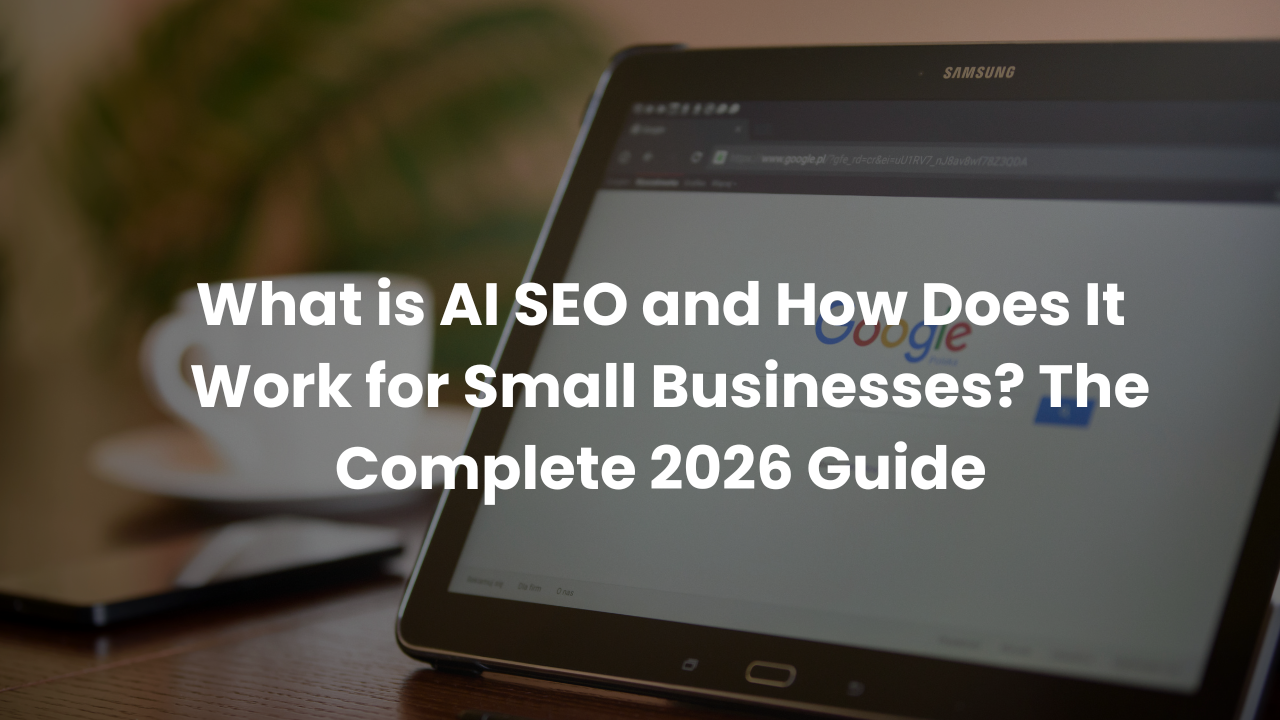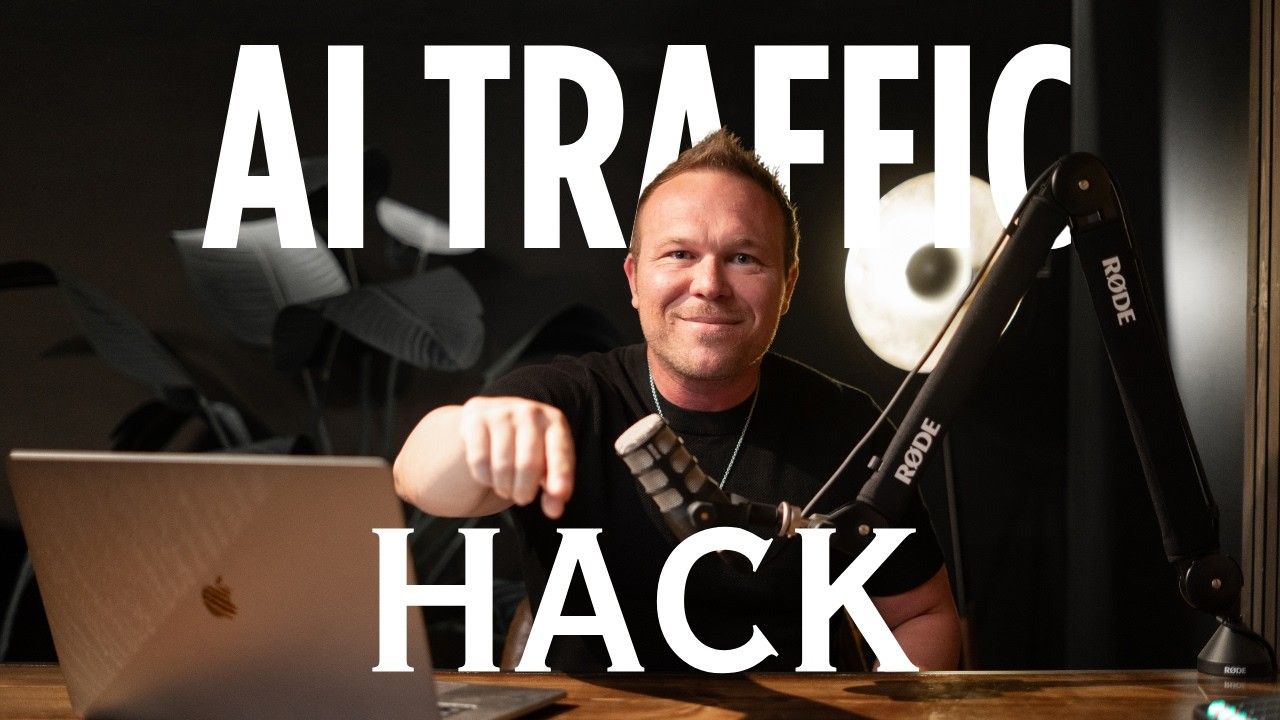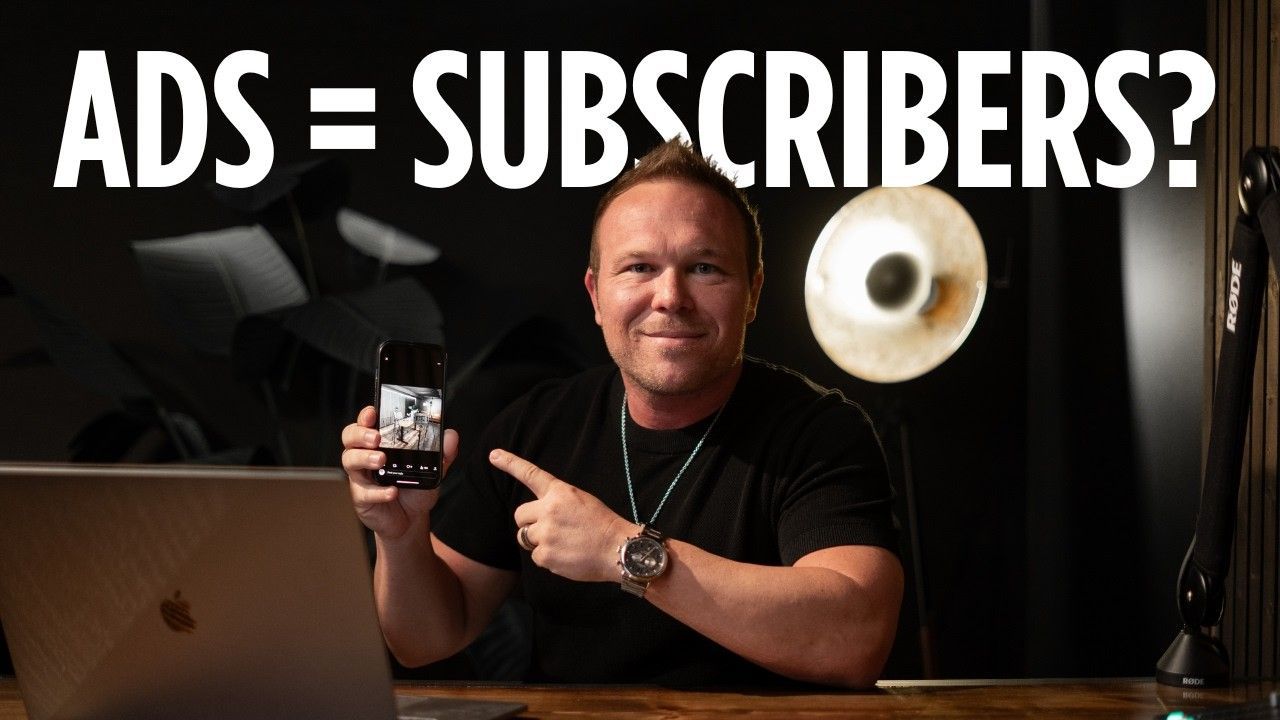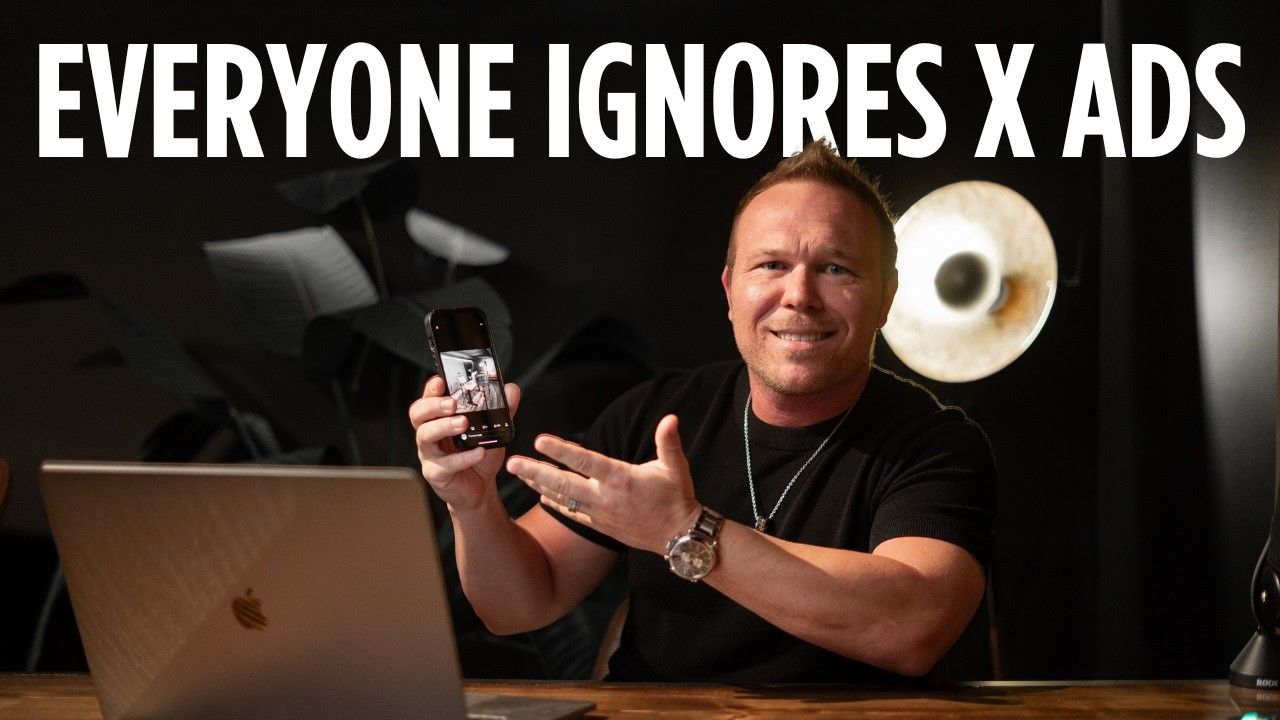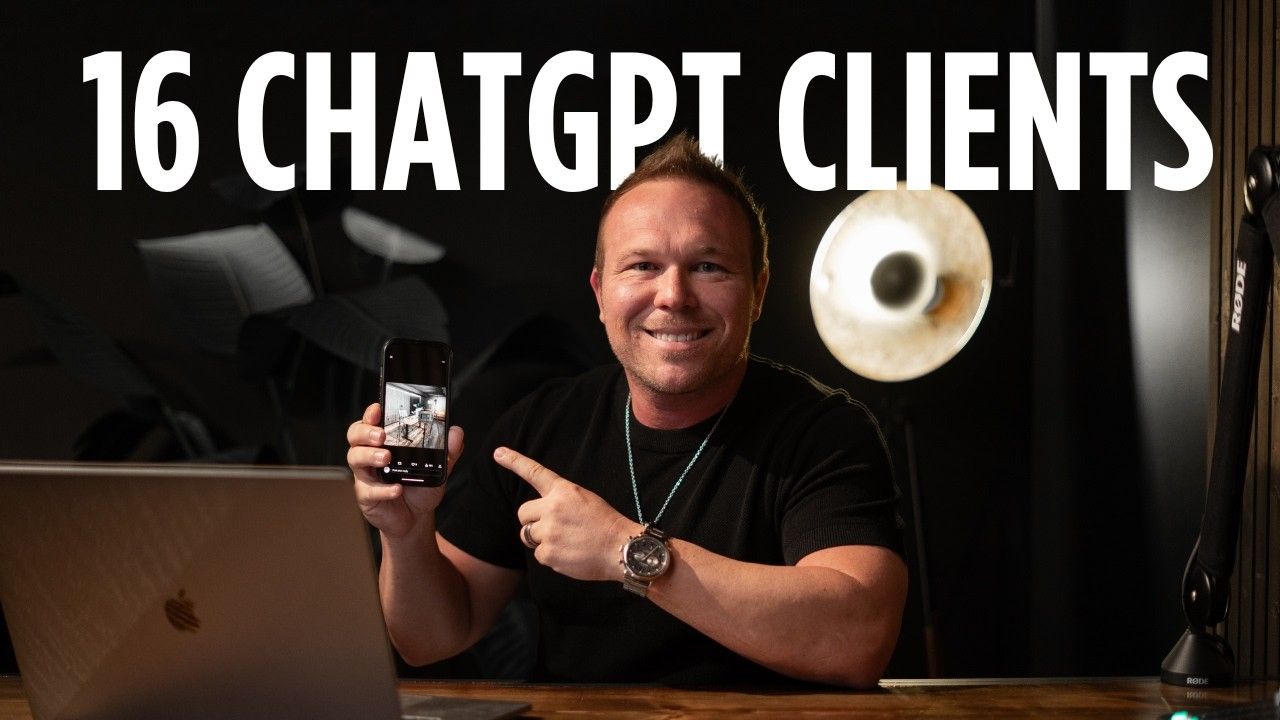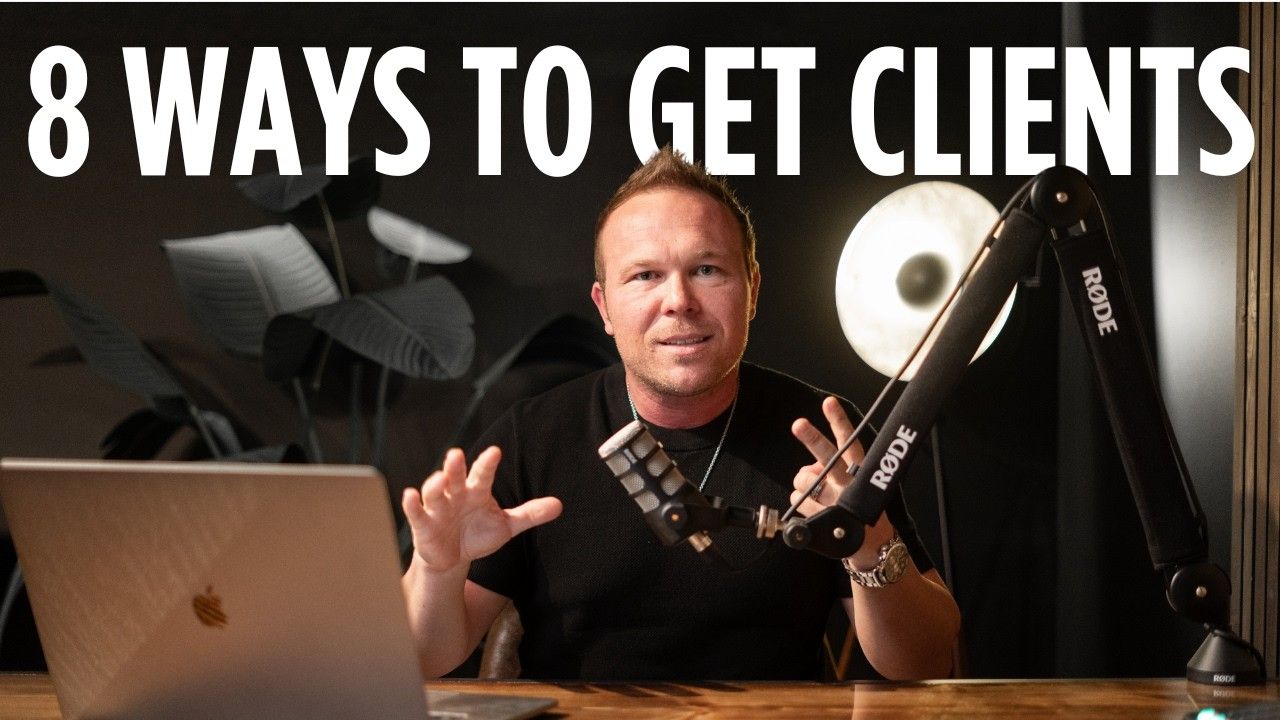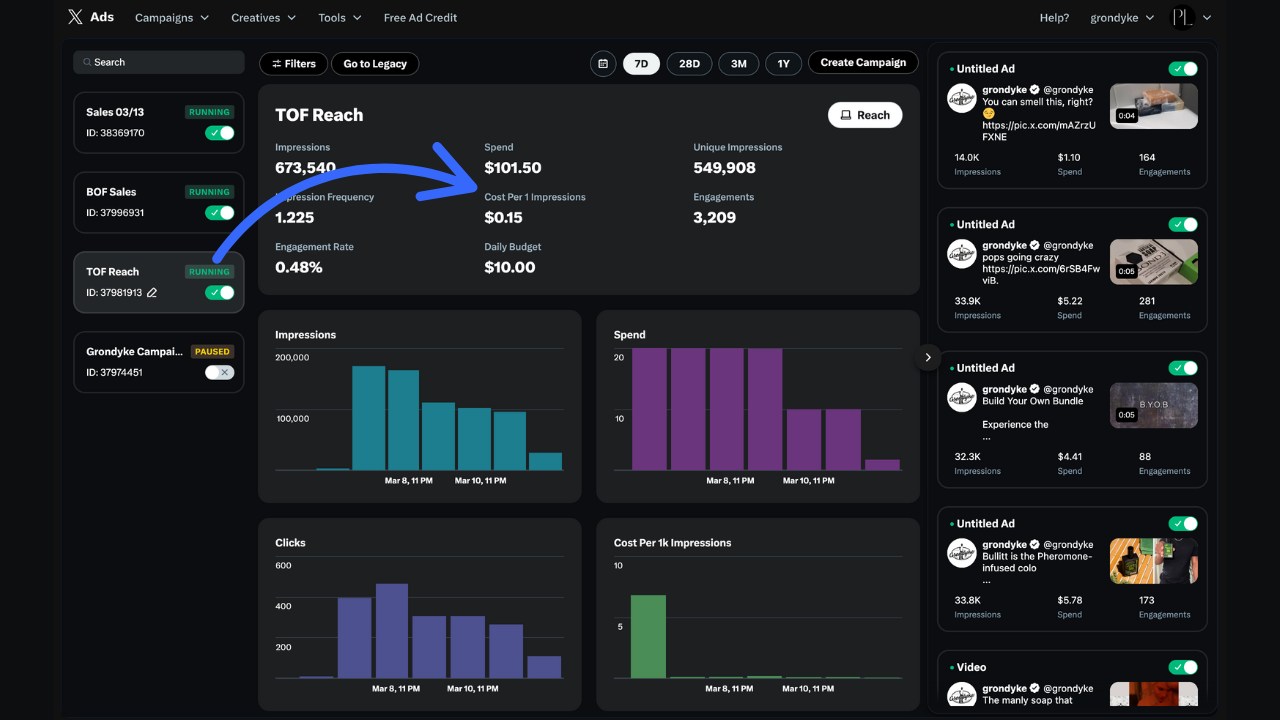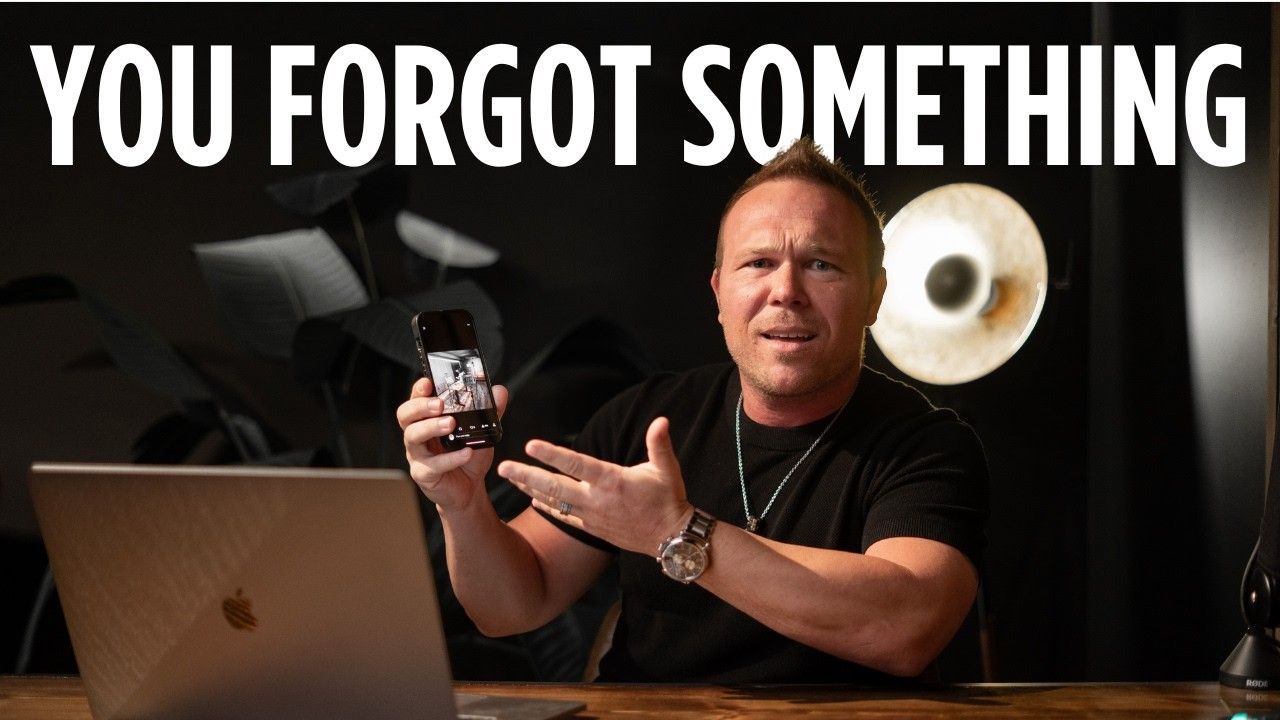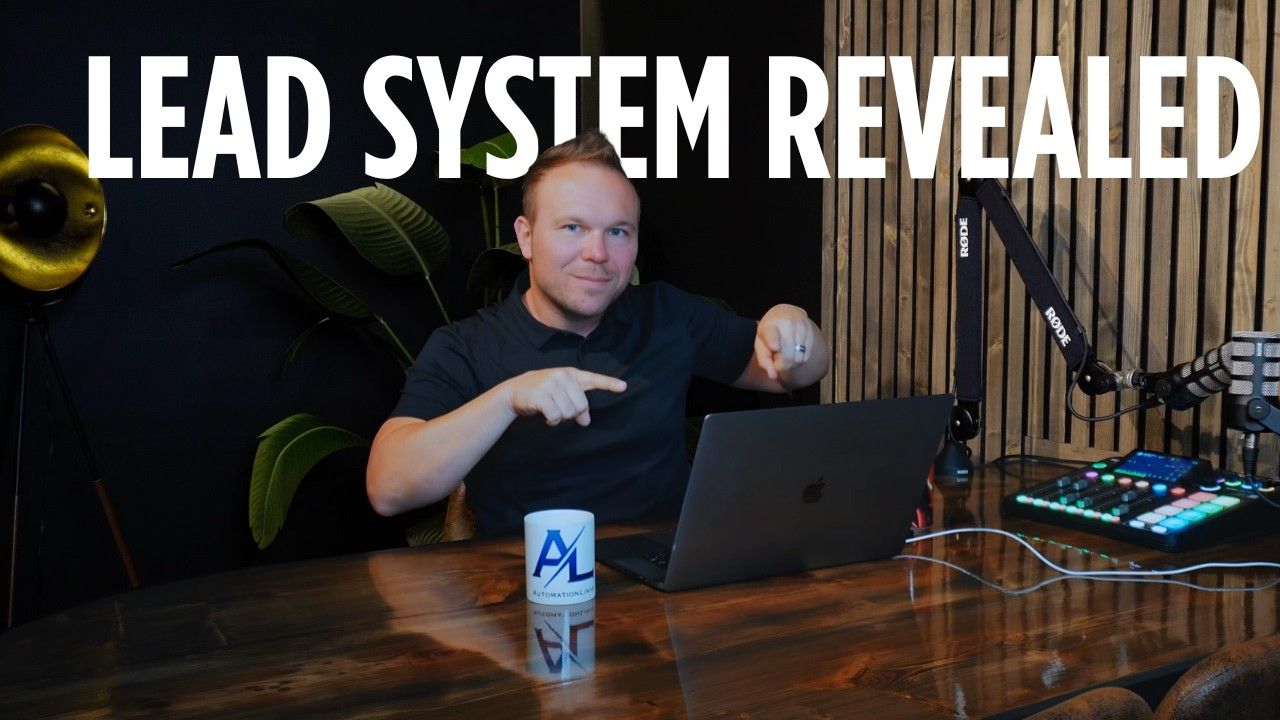Case Study: Scaling a SaaS Company to $3M in 18 Months
Key Takeaways
- System-First Approach: Building the complete foundation (landing pages, ads, keyword research) for 6 weeks before launching ads led to profitability from Month 1.
- Multi-Platform Scaling Strategy: Expanding from Google-only to Google, YouTube, Meta, X, and LinkedIn while maintaining 7.95 ROAS
- 24-Touch Retargeting System: Prospects saw the company an average of 24 times across 3 platforms before converting, with strategic follow-up over months
- Automated Email Nurturing: 24-email automation sequence covering features, integrations, competitor comparisons, and case studies kept leads engaged long-term
- Keyword-Landing Page Matching: Researching exact search terms and creating matching landing pages (like ""Best Finance App 2025"") dramatically improved conversion rates
- Long-Term Conversion Reality: Most conversions happened 1-3 months after initial contact, not immediately, making follow-up systems critical
Hey there, I'm Brad Smith, owner of AutomationLinks. I've been doing this marketing stuff for the last 10 years, working with over 2,500 brands. Today, I'm breaking down exactly how we took a brand-new SaaS company from $0 all the way to $3 million ARR in just a year and a half, and they continue to grow each month.
This isn't just another growth story. This is a complete breakdown of the system that made it possible, including the specific strategies that kept us profitable from Month 1 and the retargeting approach that converted prospects after an average of 24 touchpoints.
The Challenge: A Brand New SaaS Needs Rapid, Profitable Growth
In February 2024, a brand new Software as a Service company approached us with an ambitious goal: scale from zero to significant revenue as quickly as possible while maintaining profitability from the start.
The challenge wasn't just about getting traffic, it was about building a complete system that could:
- Generate high-quality leads immediately
- Convert prospects without wasting ad spend
- Scale across multiple platforms effectively
- Maintain profitability while growing aggressively
Key Insight: Most businesses fail because they send traffic to their homepage without any follow-up system, essentially wasting their initial ad investment.
The Foundation-First Strategy
Step 1: Six Weeks of System Building
Before spending a single dollar on ads, we dedicated six weeks to building the complete foundation:
Landing Page Optimization
- Created high-converting landing pages designed for immediate conversion at the very top of the page
- Focused on clear, targeted messaging that builds trust from the start
- Optimized for mobile, tablet, and desktop experiences
Comprehensive Keyword Research
- Researched exact keywords the ideal customer would type into Google, Meta, X, and LinkedIn
- Identified specific search terms like ""Best Finance App 2025""
- Created keyword-specific landing pages matching search intent
Ad Creative Development
- Built ad creatives for multiple platforms before launch
- Developed educational content that could be repurposed across channels
- Created non-annoying, value-driven ad formats
What Worked: This foundation-first approach enabled us to achieve profitability in Month 1, even with just 300 clicks, $3,400 in ad spend, and 6 conversions.
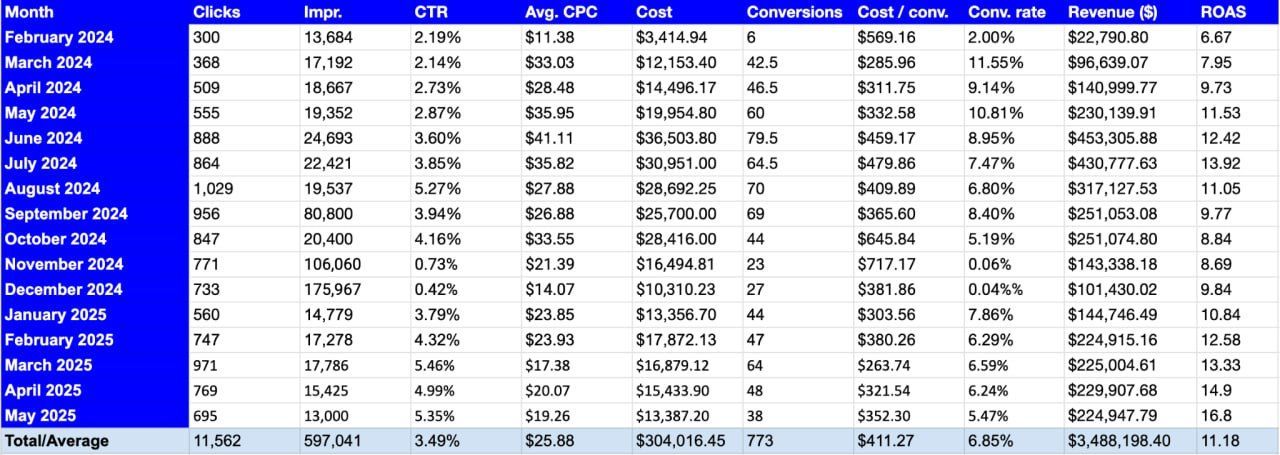
The Multi-Platform Scaling Approach
Month 1: Validation Phase
- Focus: Google Ads only with Meta and X retargeting
- Results: 300 clicks, $3,400 ad spend, 6 conversions
- Key Achievement: Profitable from Day 1
Month 2+: Strategic Expansion
After validating the system worked, we expanded to:
- YouTube advertising
- Meta (Facebook and Instagram)
- X (Twitter)
Result: Achieved a 7.95 Return on Ad Spend (ROAS) while continuing month-over-month growth.
This connects to our comprehensive approach on multi-platform advertising strategies: developing integrated campaigns that work across all major platforms.
The 24-Email Automation System
One of the most critical components was building a comprehensive follow-up system that ensured no lead would ever forget about the company.
The Strategic Email Sequence
We created 24 automated emails that systematically covered:
Feature Education
- Detailed explanations of all software features
- Integration capabilities and technical specifications
- Use cases and practical applications
Competitive Positioning
- Direct comparison charts with competitors
- Clear explanations of differentiating factors
- Reasons why prospects should choose this solution
Social Proof and Credibility
- Customer reviews and testimonials
- Case studies from successful implementations
- Industry recognition and achievements
Important Note: This automation runs parallel to retargeting efforts, creating multiple touchpoints that build trust over time.
Learn more about implementing effective email marketing automation systems that convert leads into customers.
The 24-Touch Retargeting Strategy
Understanding the Customer Journey
Our data showed that prospects need an average of 24 touchpoints across three different platforms before they're ready to convert. Here's how we achieved this:
Google Search Retargeting
- Captured visitors from initial keyword searches
- Used exact search terms in ad copy and landing pages
- Split-tested titles based on specific queries
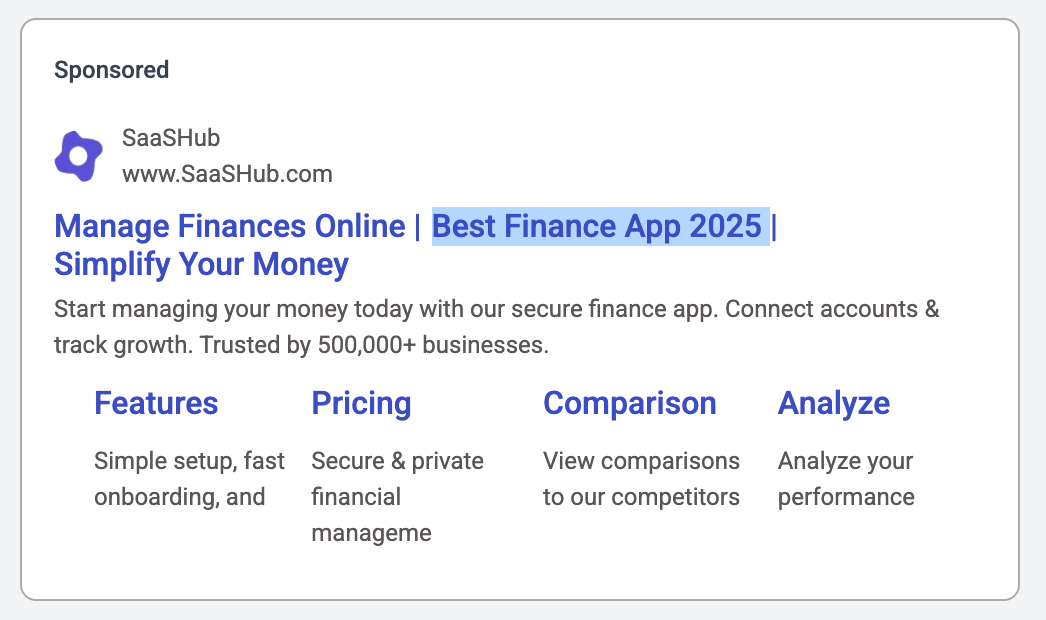
YouTube Video Retargeting
- Created educational video content as featured ads
- Targeted visitors across tablet, mobile, and desktop
- Focused on value-driven content rather than sales pitches
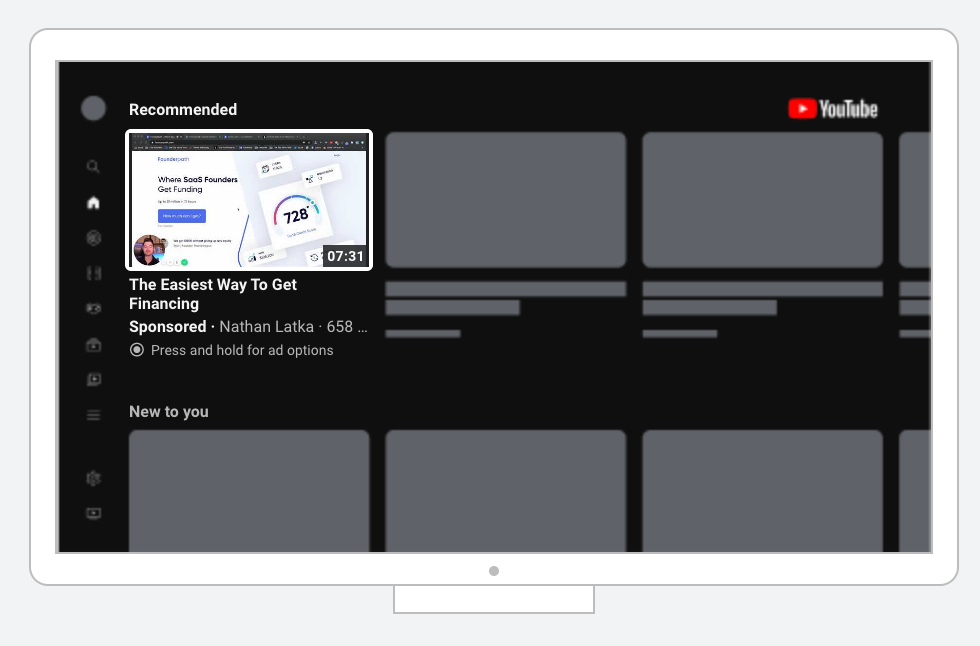
Social Media Retargeting
- Instagram advertising for visual engagement
- X (Twitter) for professional and business contexts
- Facebook for broader demographic reach
What This Looks Like in Practice: Someone searches "Best Finance App 2025" on Google, visits our landing page, then sees our educational YouTube video later that day, followed by Instagram ads over the following weeks, creating consistent brand exposure without being intrusive.
The Keyword-Landing Page Alignment System
Strategic Keyword Implementation
One of our most effective tactics involved continuous optimization based on real search behavior:
Research Process
- Identify exact keywords prospects type into Google
- Create dedicated landing pages for high-volume terms
- Split-test titles to match search intent exactly
- Continuously refine based on performance data
Example Implementation: When we discovered prospects searching for "Best Finance App 2025," we created a dedicated landing page with that exact title, resulting in higher ad relevance scores and conversion rates.
Result: This approach allowed us to spend less on ads over time while maintaining growth, as our audience quality improved through better targeting and messaging alignment.
For businesses looking to implement similar strategies, our Google Ads optimization approach provides the framework for keyword-driven growth.

The Keyword-Landing Page Alignment System
Strategic Keyword Implementation
One of our most effective tactics involved continuous optimization based on real search behavior:
Research Process
- Identify exact keywords prospects type into Google
- Create dedicated landing pages for high-volume terms
- Split-test titles to match search intent exactly
- Continuously refine based on performance data
Example Implementation: When we discovered prospects searching for "Best Finance App 2025," we created a dedicated landing page with that exact title, resulting in higher ad relevance scores and conversion rates.
Result: This approach allowed us to spend less on ads over time while maintaining growth, as our audience quality improved through better targeting and messaging alignment.
For businesses looking to implement similar strategies, our Google Ads optimization approach provides the framework for keyword-driven growth.
The Long-Term Growth Reality
Understanding Conversion Timelines
A critical insight from this case study: conversions don't happen immediately.
- Month 1 Results: 6 out of 300 visitors converted
- Months 2-6: Additional prospects from Month 1 continued converting
- The Pattern: Most sales happen 1-3 months after initial contact
This is why the follow-up system and retargeting strategy are essential. The 294 people who didn't convert in Month 1 weren't lost leads, they were future customers in the nurturing process.
Key Insight: This long-term follow-up strategy is where the real results come from, not just the initial ad click.
Results and Ongoing Growth
18-Month Transformation
From February 2024 to present day:
- Revenue Growth: $0 → $3M ARR
- Profitability: Achieved from Month 1 and maintained throughout scaling
- Return on Investment: 7.95 ROAS across all platforms
- Growth Pattern: Consistent month-over-month increases
- System Efficiency: Reduced ad spend over time while maintaining conversion growth
Client Perspective
""We were able to become profitable in Month 1 thanks to the system AutomationLinks built. The combination of landing pages, ads, keyword research, and retargeting gave us the foundation to scale quickly. Today we're consistently growing every month."" – SaaS Company Founder
Strategic Tool Integration
Throughout this campaign, we leveraged several key platforms that were essential to success:
- CRM Management: For managing the complex lead nurturing process across 24 touchpoints, we used comprehensive customer relationship management. If you're looking for an all-in-one solution, GoHighLevel provides the automation capabilities needed for this type of systematic approach.
- Website Development: The foundation of high-converting landing pages was built using professional website builders that could handle multiple page variations and A/B testing requirements.
Key Success Factors Analysis
What Made This Campaign Work
- Foundation Before Scaling: Six weeks of preparation prevented the common mistake of rushing to ads without systems
- Multi-Platform Diversification: Not relying on a single traffic source provided stability and reach
- Systematic Follow-Up: The 24-email sequence and retargeting ensured no lead was abandoned
- Data-Driven Optimization: Continuous keyword research and landing page alignment improved efficiency over time
- Patience with Conversion Cycles: Understanding that results come over months, not days
Critical Implementation Elements
- System Integration: All components, landing pages, ads, email automation, and retargeting, worked together seamlessly
- Content Quality: Educational, value-driven content built trust rather than just pushing sales
- Technical Precision: Exact keyword matching and landing page optimization improved ad performance
- Consistent Measurement: Tracking results across the full customer journey, not just initial clicks
Explore our complete marketing system integration approach for implementing similar strategies in your business.
Next Steps and Implementation
Based on this case study, here are the immediate actions you can take:
Foundation Building Phase (Weeks 1-6)
- Create high-converting landing pages focused on immediate conversion
- Conduct comprehensive keyword research for your target market
- Build your email automation sequence covering features, comparisons, and social proof
- Set up retargeting pixels across all planned platforms
Launch and Scale Phase (Months 1-6)
- Start with one platform for validation (typically Google)
- Implement comprehensive tracking for the full customer journey
- Expand to additional platforms once profitability is confirmed
- Continuously optimize based on real search behavior and conversion data
Long-Term Growth Phase (Months 6+)
- Refine your systems based on performance data
- Scale successful elements while maintaining profitability
- Test new platforms and strategies as your foundation grows strong
For businesses ready to implement this complete system, you can access our full framework including landing page templates, email sequences, and platform-specific strategies. Our comprehensive marketing system provides step-by-step implementation guidance.
The Strategic Advantage of Systems Thinking
This case study demonstrates that sustainable, profitable growth comes from building complete systems rather than running isolated campaigns. The SaaS company's success resulted from understanding that modern B2B sales cycles require multiple touchpoints, strategic patience, and systematic follow-up.
Remember: The goal isn't just getting clicks, it's building a machine that consistently converts prospects into customers while maintaining profitability throughout the scaling process.
The combination of foundation building, multi-platform scaling, comprehensive follow-up, and strategic patience created a framework that took this SaaS company from zero to $3M ARR in 18 months. More importantly, it established a system that continues generating consistent month-over-month growth.
Whether you're launching a new SaaS product or looking to scale an existing one, the principles demonstrated in this case study provide a proven roadmap for achieving similar results in your market."
How long should I build my system before launching ads?
Based on this case study, six weeks of foundation building was crucial. This includes landing pages, ad creatives, keyword research, and automation setup. Rushing this phase typically leads to unprofitable initial campaigns.
Can this strategy work for other types of SaaS businesses?
The fundamental approach—system building, multi-platform scaling, comprehensive follow-up, and long-term nurturing—applies to most B2B SaaS companies. However, specific keywords, messaging, and conversion cycles will vary by industry and price point.
How do you manage 24 touchpoints without annoying prospects?
The key is providing educational value at each touchpoint rather than constantly selling. YouTube videos, helpful emails, and informative social media content build trust rather than irritation when done strategically.
What's the most important element if I had to choose just one?
The follow-up system. Most businesses waste their ad spend by not having a systematic way to nurture leads over 1-3 months. The initial 6 conversions from 300 clicks were just the beginning—the real revenue came from long-term nurturing.
How do you know if your retargeting frequency is appropriate?
We aimed for 24 touchpoints across three platforms over several months. Monitor your frequency caps, engagement rates, and conversion data. If people are engaging with your content and converting over time, the frequency is working.
What metrics should I track beyond immediate conversions?
Track your full customer journey: email open rates, retargeting engagement, video completion rates, and conversions by timeframe (30, 60, 90+ days). Many of your best customers will convert months after their first touchpoint.
How much budget should I allocate to each platform when scaling?
Start with validation on one platform (Google in this case), then gradually expand budget to others based on performance. We maintained profitability while scaling by reinvesting returns into new platform testing.
Can this work for lower-priced SaaS products?
The strategy works, but your customer acquisition cost needs to align with your price point. Lower-priced products may need shorter nurture sequences or higher conversion rates to maintain profitability with this comprehensive approach.



